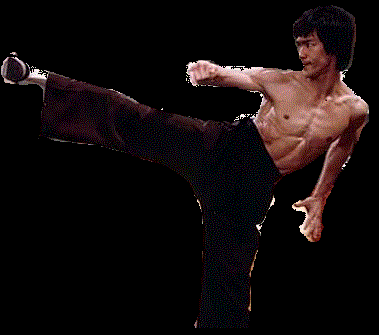Kempo
Kenpō (拳法) is the name of several Japanese martial arts. The word kenpō is a Japanese translation of the Chinese word "quán fǎ". This term is often informally transliterated as "kempo", as a result of applying Traditional Hepburn romanization, but failing to use a macron to indicate the long vowel. The generic nature of the term combined with its widespread, cross-cultural adoption in the martial arts community has led to many divergent definitions.
American Kenpo:
Kenpō has also been appropriated as a modern term: a name for multiple martial arts that developed in Hawaii due to cross-cultural exchange between practitioners of Ryukyuan martial arts, Chinese martial arts, Japanese martial arts and multiple additional influences. In the United States, kenpo is often referred to as Kenpo Karate. The most widespread styles have their origin in the teachings of James Mitose and William Kwai Sun Chow. The American East Coast features a branch of Kenpo created by Nick Cerio, and later built upon and redefined by Fredrick J. Villari who brought the hybrid art of Shaolin Kempo Karate to the general public through his nationwide network of "Villari's Martial Arts Centers". The Villari system integrated the strengths of American Kenpo with the larger scope of movement and grappling available in Shaolin Kung Fu and Chin Na to create a highly unique American Kenpo offshoot system.
Mitose was Chow's instructor. This lineage also includes Kajukenbo, an art that does not use the kenpō name itself, but which possesses recognized offshoots that do.[citation needed] These arts have spread around the world through multiple lineages, not all of which agree on a common historical narrative. The system of Kenpo taught by founder James Mitose employed hard linear strikes and kicks, pressure point manipulation, circular movement patterns, and joint locking and breaking.
Ed Parker is the most prominent name in the Mitose lineage. A student of William Chow in Hawaii for nearly six months, Ed Parker moved to the US mainland to attend Brigham Young University. In 1957, he began teaching the Kenpo Karate that he had learned from Chow, and throughout his life modified and refined the art until it became Ed Parker's American Kenpo. It employs a blend of Chinese circular movements and hard linear movements, which come together seamlessly to form an effective self defense system. Parker created techniques with names such as Thundering Hammers, Five Swords, Prance Of The Tiger, and Flashing Mace to provide a memorization tool to the student.
Okinawan and Ryukyuan usage:
Some Okinawan martial arts groups use the term kenpō as an alternate name for their Karate systems or for a distinct but related art within their association. This can be illustrated by the International Shorin-Ryu Karate Kobudo Federation, where Shōrin-ryū is the actual karate style practiced, whereas "hakutsuru kenpo", or "hakutsuru kenpo karate" is a related but distinctive style also taught by the association. Both the "n" and "m" romanizations are used by various groups.




